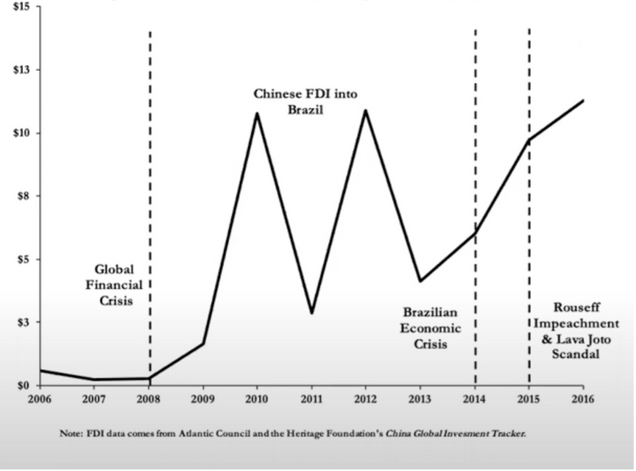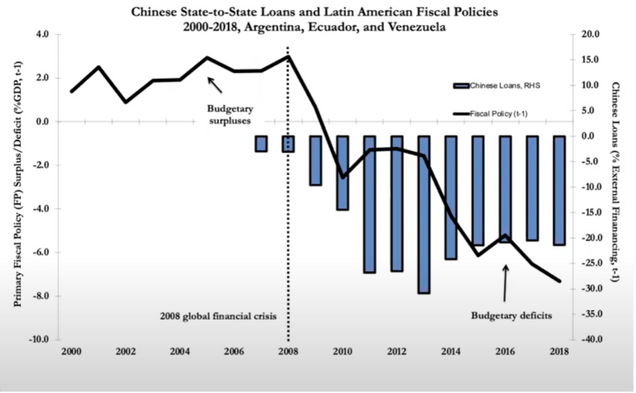Webinar Summary – Globalizing Patient Capital: The Political Economy of Chinese Finance in the Americas
On Thursday, February 17, 2022 the Boston University Global Development Policy (GDP) Center hosted Dr. Stephen B. Kaplan, Associate Professor of Political Science and International Affairs at the George Washington University, to discuss his new book Globalizing Patient Capital: The Political Economy of Chinese Finance in the Americas. The webinar was part of the Spring 2022 Global Economic Governance Book Talk Series.
In his book, Kaplan argues China’s overseas financing is a distinct form of patient capital that marshals the country’s vast domestic resources to create commercial opportunities internationally. Its long-term risk tolerance and lack of policy conditionality has allowed developing economies to sidestep the fiscal austerity tendencies of Western markets and multilaterals. Employing statistical tests and extensive field research across China and Latin America, he finds China’s patient capital endows national governments with more room to maneuver in formulating domestic policies. Kaplan also evaluates the potential costs of Chinese financing, raising the question of how Chinese lenders will react to developing nations’ ongoing struggles with debt and dependency. In all, his book spells out the significant implications of the rise of China in Latin America, offering new insights about globalization and showing the costs and benefits of state versus market approaches to development.
The result of 20 years of research on Latin American engagement with China in the areas of finance, trade and investment, Kaplan was motivated to address questions like, what are the implications of China’s increasing global finance? In what ways does it differ from Western multilateral and private financing? And what economic and political consequences do these unique characteristics have for borrowing countries?
During the talk, Kaplan argued China’s global finance and investment provide borrowing countries with more policy autonomy and room to maneuver in the face of capital exits from Western and private capital. Chinese capital provides this space because it is risk tolerant and more likely to weather economic booms and busts compared to Western and private capital, and because Chinese lenders does not impose policy conditions on borrowers, relying instead on commercial conditions to ensure repayment. This increased fiscal space has provided important benefits to Latin American states, including long-term financing that aligns with development goals and infrastructure to meet the region’s growing needs. However, Kaplan warned that it comes with costs, such as commercial conditionality, rising indebtedness, reinforced commodity dependency and growing fiscal deficits.
交流
Second, China’s global finance has a much higher tolerance for risk, especially when entering new markets, than Western multilateral or private creditors. Kaplan found China’s overseas finance and investments are more likely to be active in both boom-and-bust times for its borrowers. For example, after the 2008 global financial crisis, Brazil’s economic crisis in 2014 and the Lava Jato bribery scandal in 2015, Chinese foreign direct investment (FDI) in Brazil spiked, even while Western investors were pulling their capital out. This again builds on China’s priority of opening strategic sectors to Chinese economic activity; China can secure assets cheaply when Western investors sell out from high-risk assets following financial crises. China tolerates this risk, knowing that over the long term, benefits will accrue to Chinese policy banks and enterprises.
Figure 1: Chinese Investors Buy Cheap Brazilian Assets (US$ billions)

Th
来
In a contrasting case of market-oriented finance, Argentina contracted Shanghai Electric Power Construction through a private procurement system, RenovAr, to build the Caucharí solar parks in Jujuy Province. While the project was ultimately supported by a $331 million loan from the Export-Import Bank of China, the financing went directly to a corporate enterprise rather than the Argentine state. The financing came with requirements to buy Chinese machinery and equipment, but lacked the discretionary element present in the Santa Cruz financing. Due to the private auction process, however, Argentina’s laws required the consent of local communities to move forward with the project, leading to greater transparency and benefits for the community, including profit participation and training for jobs in the construction and operation of the plant.
Kaplan’s juxtaposition of the two Argentine cases demonstrated the need to approach analysis of Chinese financing based on its intended recipients, states or corporations, with the state-to-state channel in particular having far-reaching impacts on Latin American countries.
不
Figure 2: Patient Capital Enhances Policy Flexibility

Kaplan concluded by discussing the outlook for China’s financing in Latin America. China has begun to pursue a more diversified finance and investment strategy, channeling less finance through bilateral official loans in the wake of the 2014 commodity downturn and resulting debt distress among Latin American countries. One new funding mechanism has been state-backed private equity funds, which allow China to invest in equity instead of debt and to focus on procurement. Another mechanism has been increased multilateralism; Kaplan highlighted the Asian Infrastructure Investment Bank’s (AIIB) cooperation with the World Bank, increased lending from China’s commercial banks and partnerships with other local development banks.
While the impacts of the COVID-19 pandemic in China, Latin America and across the globe remain uncertain, Kaplan argued alternative financing mechanisms may grow in importance, both to protect Chinese investors and to reduce debt burdens for Latin American countries.
*
Never miss an update: Subscribe to updates from our Global Economic Governance Initiative.
